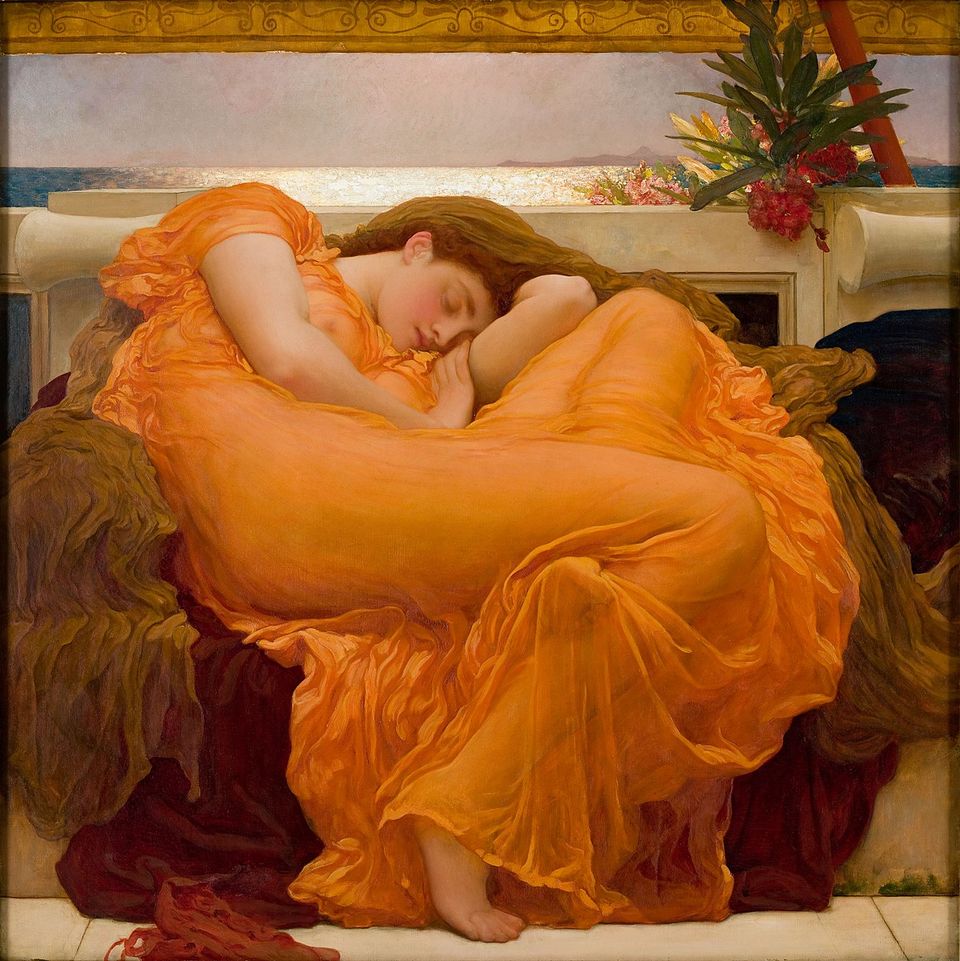Flaming June: The History Behind the Painting

The iconic painting Flaming June by Frederic Leighton, 1st Baron Leighton of Stretton is one of the most beloved pieces of Victorian art. It was created in 1895 as a response to Pre-Raphaelite paintings that focused on female beauty. The work features a sleeping woman wearing an orange robe and lying on a white marble bench, surrounded by an ethereal orange-red atmosphere.
The painting's name is derived from a line in the poem "Endymion" by John Keats which reads: "Fledge'd with the oar of damask light,/No such Flaming June was ever seen". This line is thought to be a reference to the figure in the painting, who appears to be sleeping peacefully but is almost radiating with a mysterious inner light.


The subject matter of Flaming June represents an idealized Victorian vision of beauty; the graceful pose, robust curves and luminous skin make her appear as a goddess-like apparition. The painting is composed of soft, pastel colors and delicate brush strokes, creating a dream-like quality.
The painting was created during the Victorian Period in 1895. Its style is characterized by elements of realism, romanticism and symbolism. Although it has classical influences such as the marble bench and draped gown, its pastel palette marks it as distinctly Victorian.

The painting itself is an oil on canvas measuring 75 by 117 centimeters (30 in × 46 in). It is currently housed at the Museo de Arte de Ponce in Puerto Rico, where it has been since 1962.
Flaming June is considered one of the finest examples of Victorian art and remains a beloved classic to this day. Its dreamy quality and timeless beauty have inspired generations of artists and art lovers alike. It is a testament to the power of art, in all its forms, to evoke emotion and transport us to another world.

D'Artisan Shoppe Professional Brushes
15PCS: 4 natural hog hair bristle brushes and 11 synthetic bristle brushes

